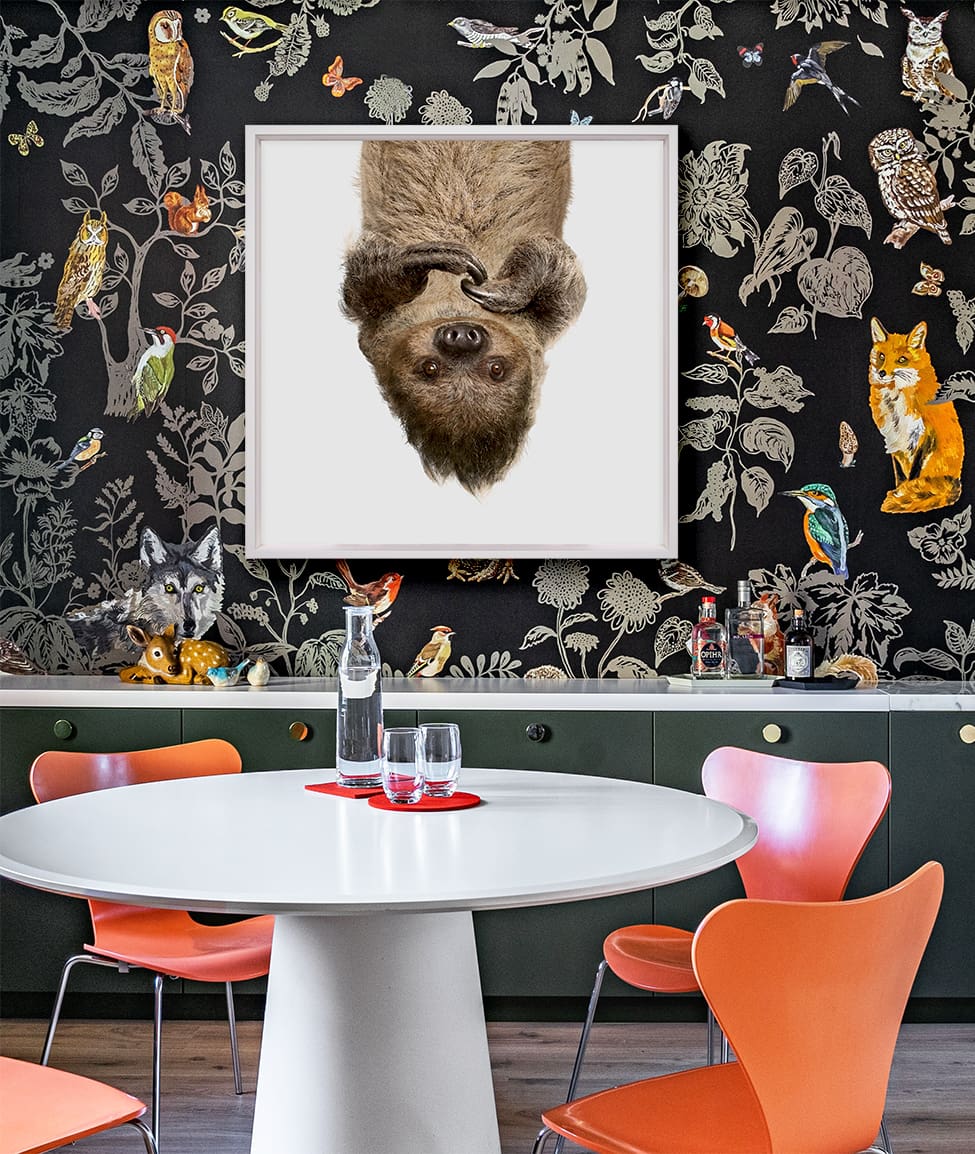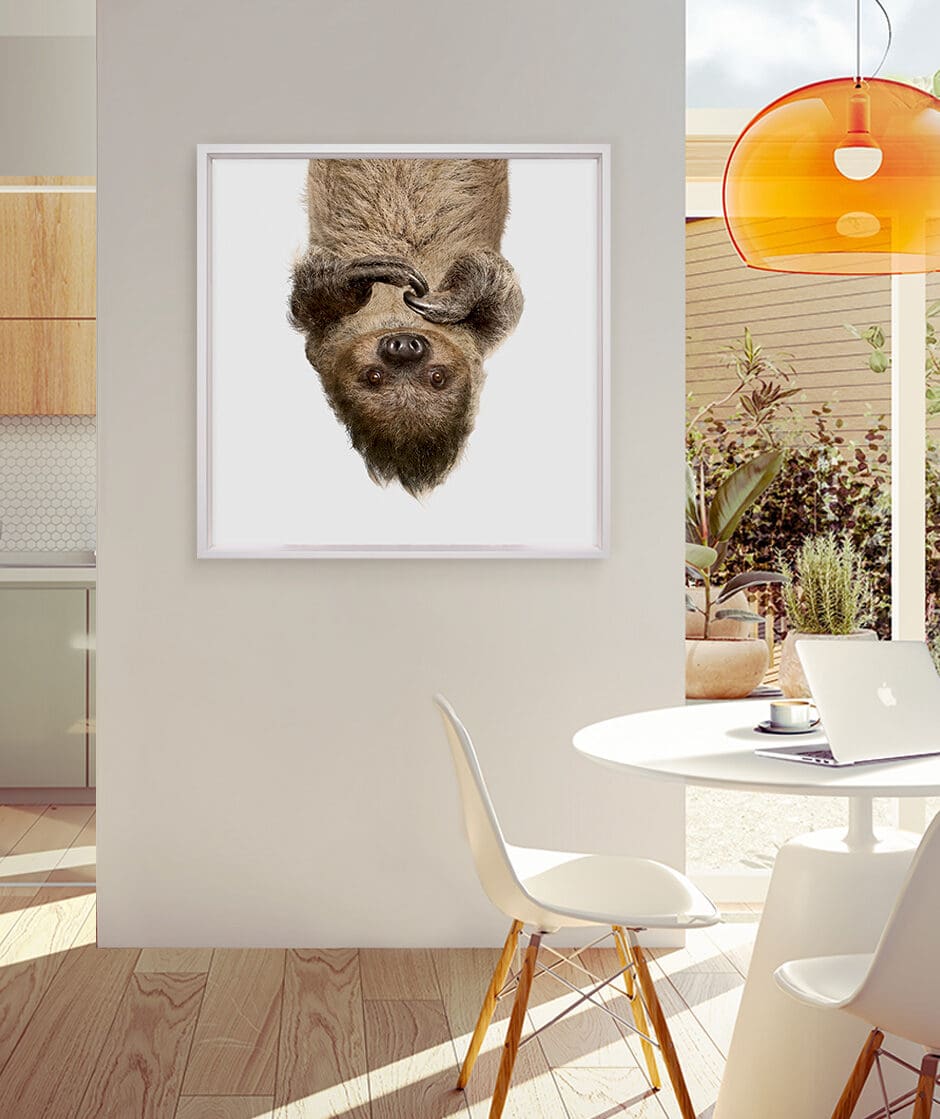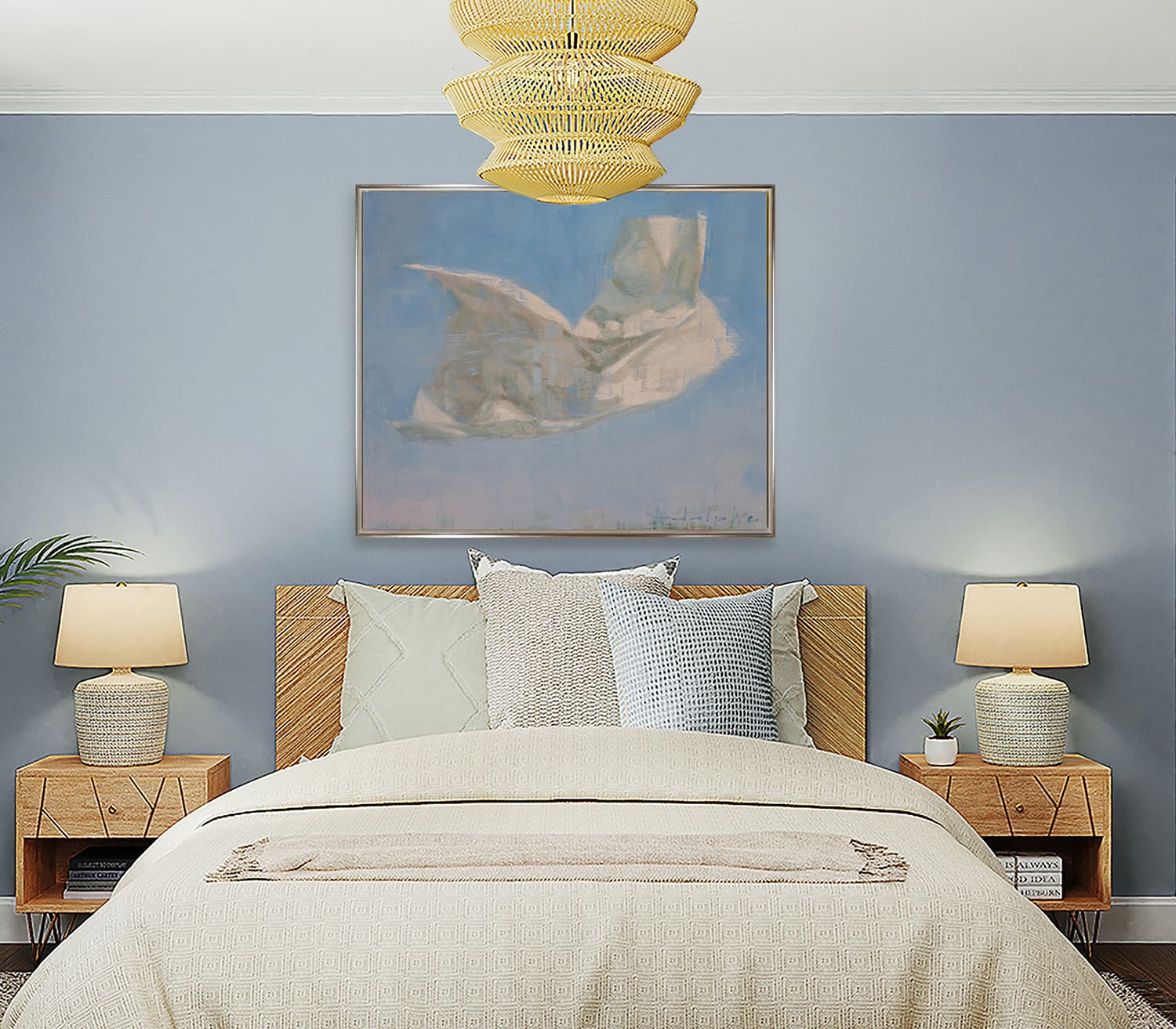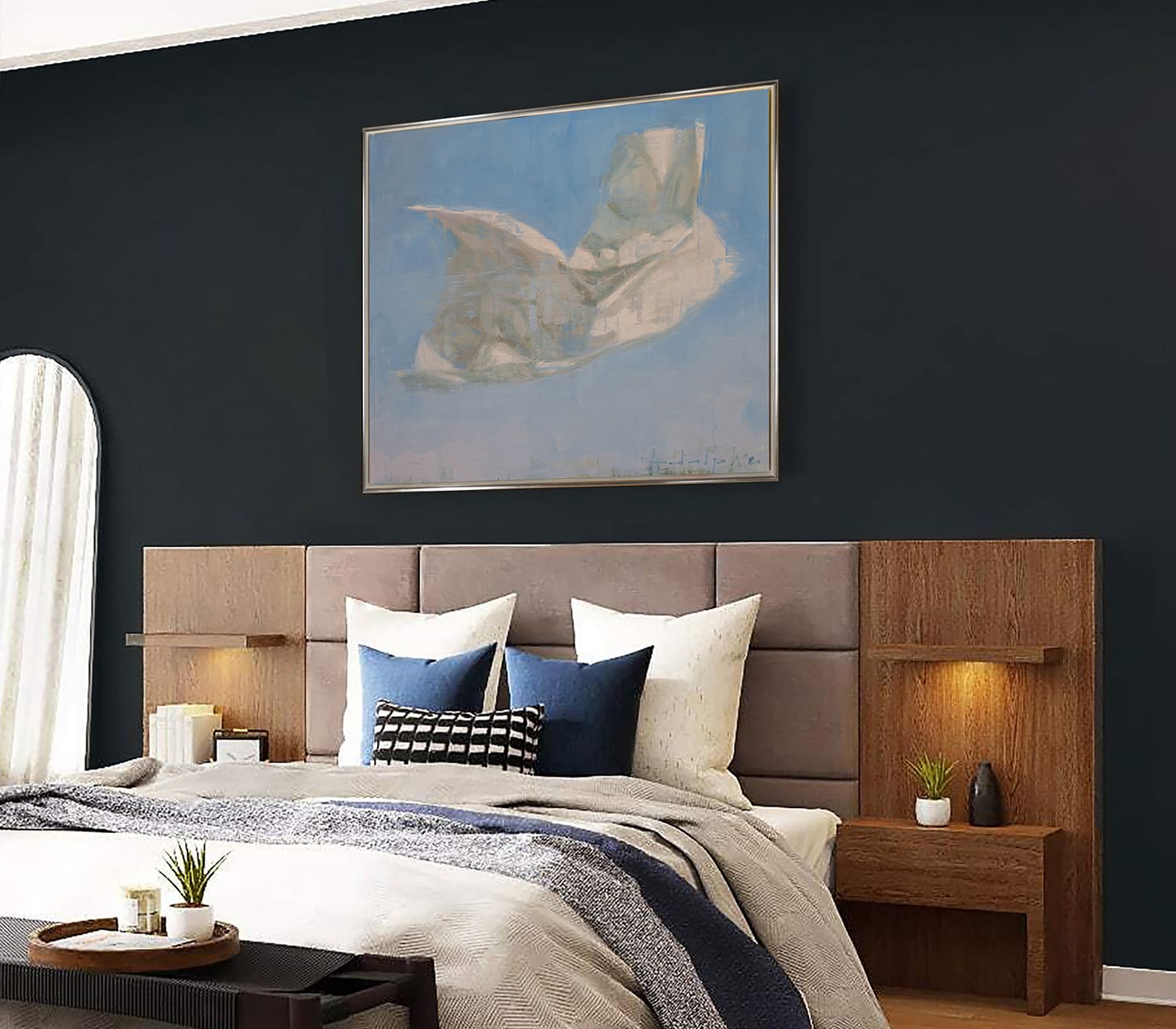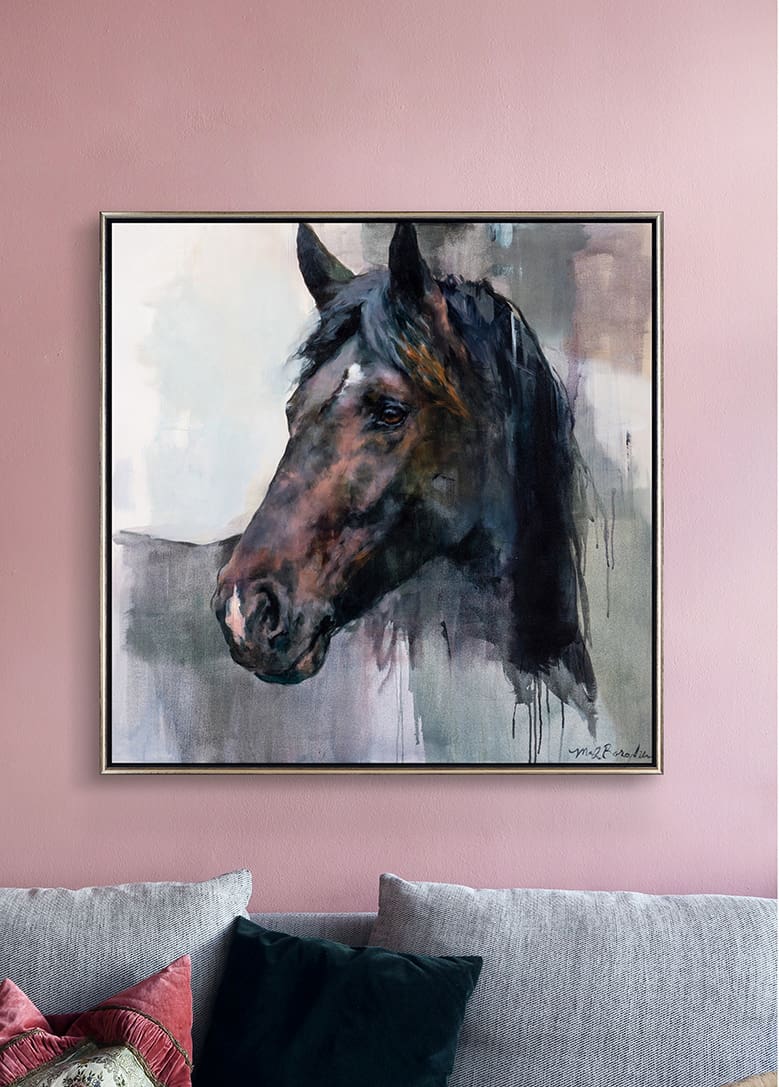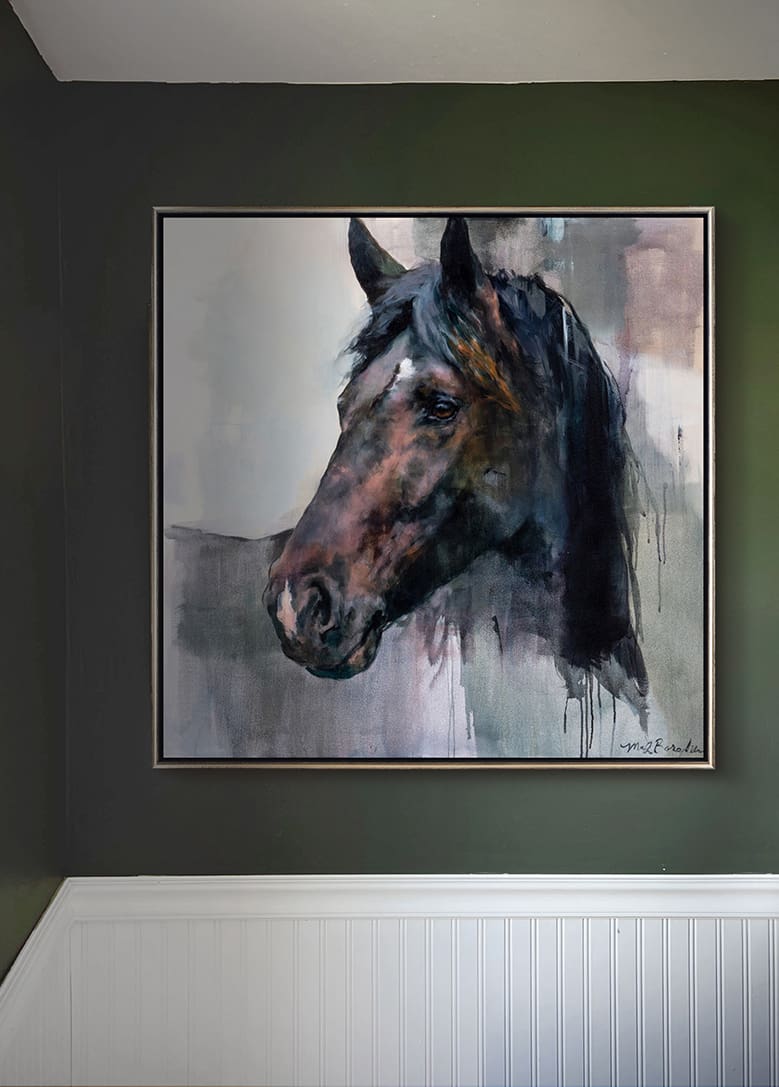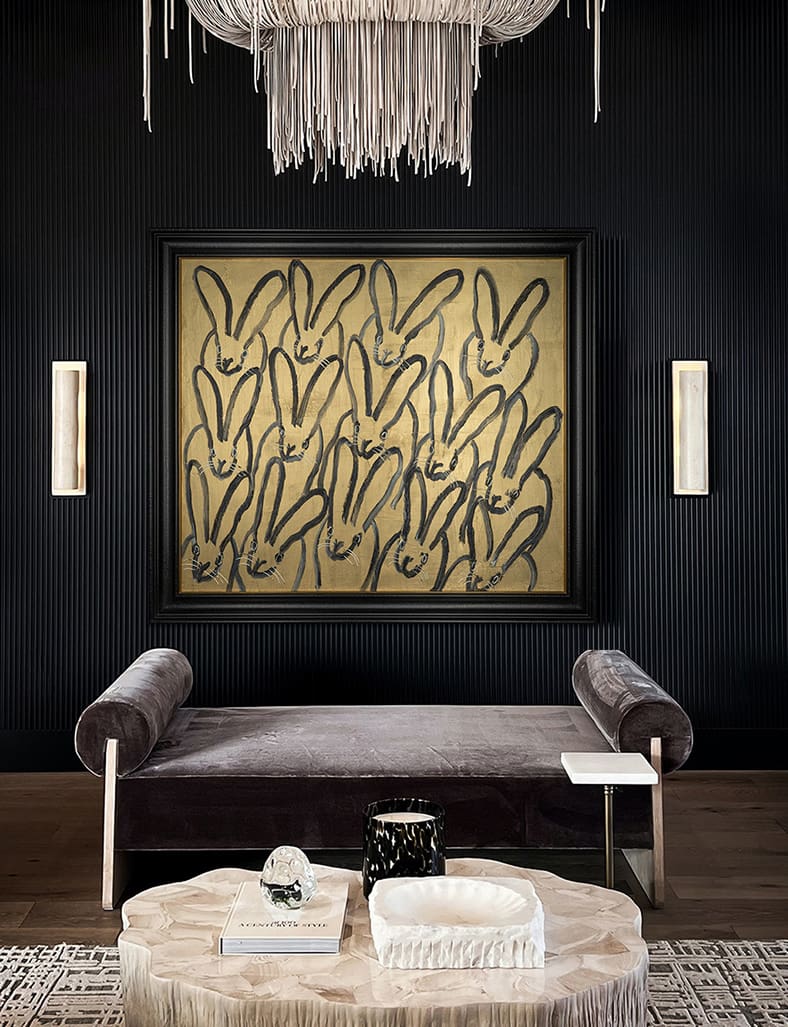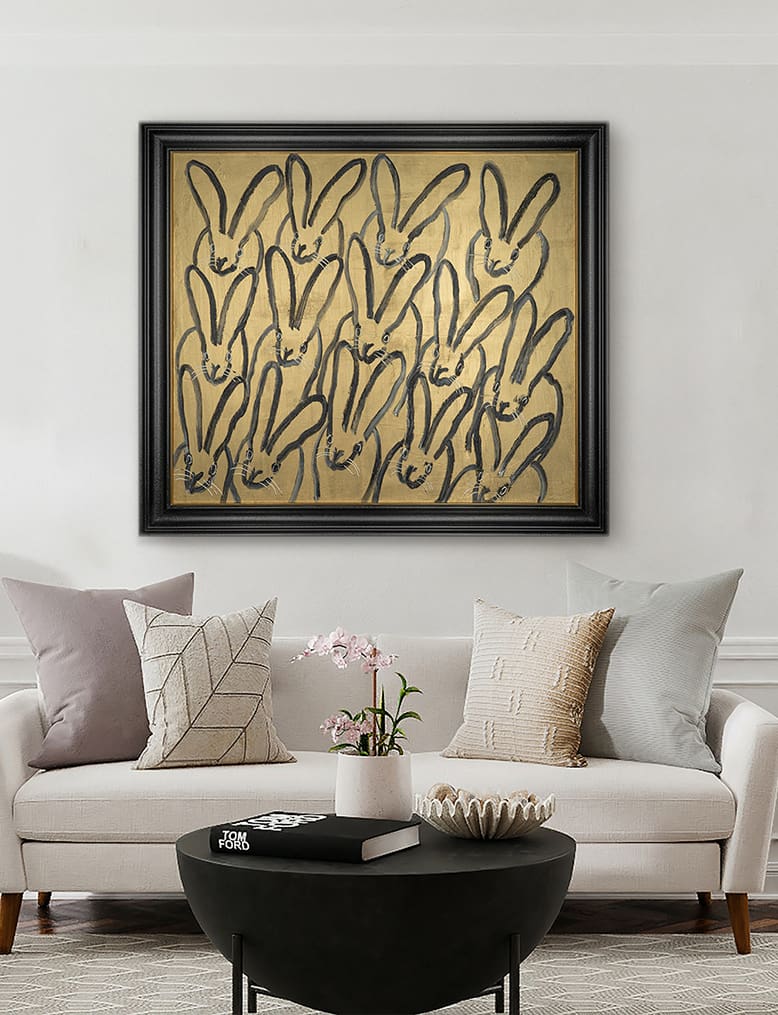Hint: There’s no right or wrong answer…
You just added a new work of art to your personal collection—next step, decide where to place it! Taking the color palette and composition into consideration, choose a backdrop that will accentuate your favorite elements of the artwork. Check out some examples below that demonstrate how wall color, brightness, and pattern can bring out different aspects of your piece.
Maximal vs. Minimal
Randal Ford photographs his wildlife subjects in the studio, removing any distractions and allowing you to focus on each animal’s personality and gestures. With its crisp white background, Upside Down Sloth can add a bit of relief to an intricate wall covering or harmonize perfectly in minimalist surroundings.
Randal Ford, Upside Down Sloth, Photograph on Paper, 32 x 32 inches
Shades of Blue
On this sky blue wall, Joseph Adolphe’s A Whisper feels especially serene, complementing the airy atmosphere of the space. On the other hand, placing the piece on a navy backdrop creates a striking contrast and brings out the drama of the composition.
Joseph Adolphe, A Whisper, Oil on Canvas, 36 x 43 inches
Understanding Undertones
Marilyn Borglum’s Nouveau Bay may appear neutral at first glance, but there’s actually a complex array of tones layered into this painting. Placing the piece on a pink wall really brings out its magenta undertones, making it feel softer and feminine. On the mossy color, darker and cooler tones start to come forward.
Marilyn Borglum, Nouveau Bay, Acrylic on Canvas, 42 x 42 inches
Black and White
It’s amazing to see how the mood of Hutch Scotch by Hunt Slonem changes in this example. The dark room accentuates the brilliance and sophistication of the gold paint and thick black frame. In the white room, Slonem’s bunnies are still very refined, but take on a lighter, more whimsical tone.
Hunt Slonem, Hutch Scotch, Oil on Canvas, 44 x 50 inches

